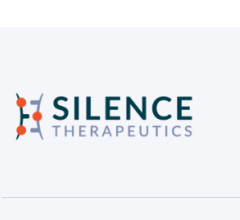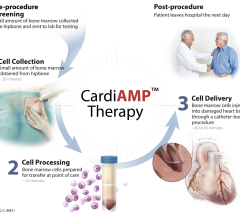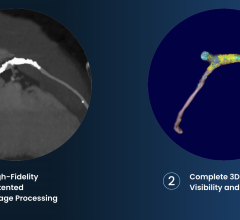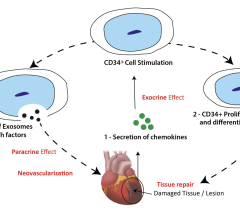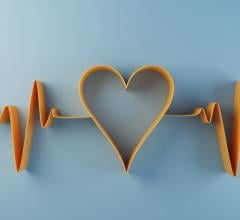Circadian rhythms affect the incidence of coronary stent thrombosis, with more events occurring during the early morning hours, according to new research published in the February 2011 issue of JACC: Cardiovascular Interventions.
The analysis was only the second study conducted on circadian (24-hour) variation in coronary stent thrombosis and was the first to also examine seasonal patterns and weekly variation. Its findings associate coronary stent thrombosis with several other adverse cardiac events that also follow a circadian pattern, such as stroke, unstable angina pectoris, acute myocardial infarction (AMI) and sudden cardiac death.
“Most studies that have addressed circadian variation in cardiovascular disease were conducted in the eighties and early nineties,” said Karim Mahmoud, BSc, one of the study’s authors. “Since coronary stents are a relatively new phenomenon, circadian variation in stent thrombosis had only been investigated in a single study with a small sample size. Stent thrombosis is a feared complication of coronary stent placement, however, as it usually presents as AMI or sudden death, and even if patients are rapidly treated, the outcome is often unsatisfactory. Therefore, it remains essential to expand our knowledge and optimize prevention and treatment of this condition.”
Seeking to find this additional insight into the patterns and triggers of stent thrombosis, the research team from Mayo Clinic — Rochester conducted a retrospective analysis of 124 patients who presented with stent thrombosis at the Mayo Clinic between February 1995 and August 2009.
By conducting medical record reviews and examining information in the clinic’s registry, the team determined when the symptoms associated with stent thrombosis occurred and what the patient was doing prior to symptom onset. Specifically, the researchers determined the time of day, day of week and season of year that the stent thrombosis occurred and recorded when potential triggers were present. In addition, the team categorized each stent thrombosis as being early, late or very late based on the number of days it occurred from the initial stenting procedure (early = 0 to 30 days, late = 31 to 360 days, and very late = more than 360 days.)
The researchers found a significant association between the onset of stent thrombosis and the time of day, with a low incidence at around 8 p.m. and a peak at approximately 7 a.m. (p = 0.006). However, when the team divided the analysis into early, late and very late stent thrombosis, only the association between early stent thrombosis and time of day remained significant (p = 0.030, p = 0.537, p = 0.096, respectively). The team did not find any significant association between stent thrombosis and day of week, but they did discover a seasonal discrepancy in stent thrombosis rates, with higher rates in the summer months, including a peak incidence between the end of July and the beginning of August (p = 0.036).
In search of potential triggers, the team was able to establish the physical activity level prior to stent thrombosis onset in 62 patients. Of these patients, 33.9 percent were sleeping, 25.8 percent were lying or sitting, 29 percent were engaged in light-to-moderate physical exertion, and 11.3 percent were engaged in heavy physical exertion. Other medical conditions were also identified as possible triggers among the full 124-patient study sample, including medication noncompliance (5.6 percent), hospitalization for surgery or invasive diagnostics (4 percent) and acute infections (4 percent).
According to the authors, “several physiological processes” may contribute to the increased rate of stent thrombosis in the morning hours. These include hypercoagulability and hypofibrinolysis during this time; a higher activity level of the renin-angiotensin-aldosterone hormone system between 6 and 8 a.m., which causes higher blood pressure and heart rate; a higher degree of blood viscosity in the morning, which is magnified by sitting upright after a night of supine sleep; and lowered levels of antithrombotic medication in the morning just before the patient awakens and takes a new dose.
The team also postulated that the lack of an association between stent thrombosis and day of week—which is unlike other adverse cardiac events, such as AMI, in which higher occurrences have been found on Monday—may suggest that mental stress from employment plays a more limited role in stent thrombosis. A higher rate of stent thrombosis in the summer months, meanwhile, may be attributed to patients’ higher activity level in warm weather, the researchers explained.
According to Mahmoud, although the data on stent thrombosis triggers “should be seen as explorative and require further investigation,” several potential associations were found, including a connection between heavy physical activity and symptom onset. Specifically, the authors wrote there is “indeed circumstantial evidence” of this connection, even though heavy activity came behind the three other activity categories, because “surely it is unlikely that 11 percent of a population is engaged in heavy physical activity at a certain point.” In addition, the team found relatively high rates of medication noncompliance and acute infections in the study sample.
The authors admit there has been a decreasing incidence in stent thrombosis across recent years — largely because of dual antiplatelet therapy and improved stent design. But they add that the consequences of this adverse event remain severe, and that the study’s conclusions may help improve outcomes “by optimizing medical treatment during high-risk intervals throughout the day, week, and year.”
“The most practical implication of these study results is that it may be of benefit for patients with coronary stents to take their antithrombotic medication in the evening (rather than in the morning) to prevent nadir levels of medication during the hazardous morning hours,” Mahmoud said.
For more information: www.cardiosource.org/ACC

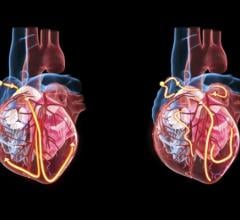
 January 14, 2025
January 14, 2025 
